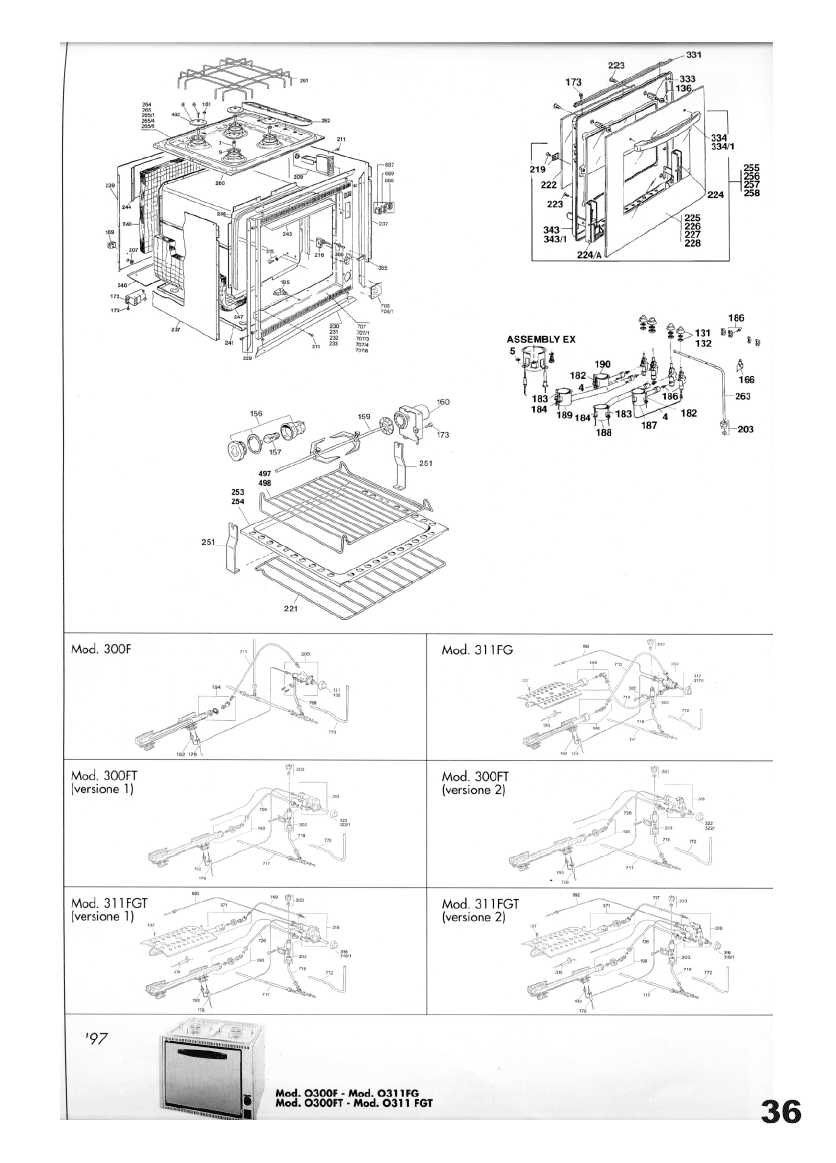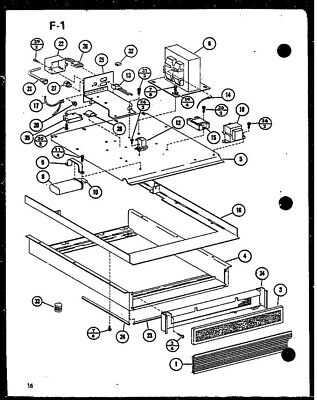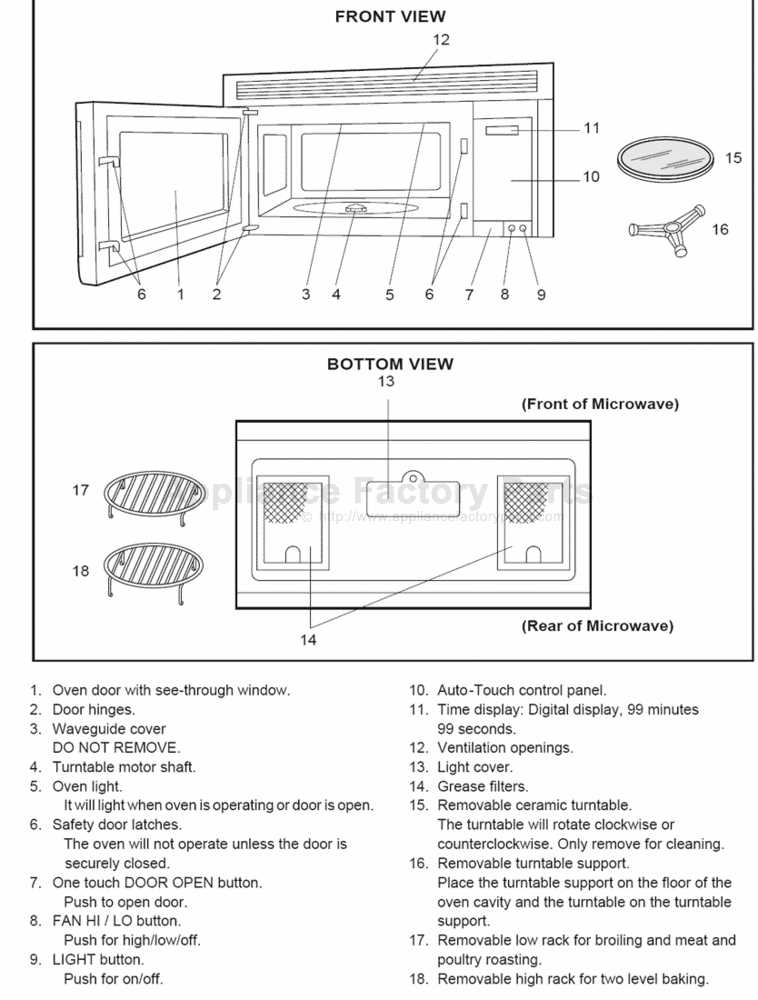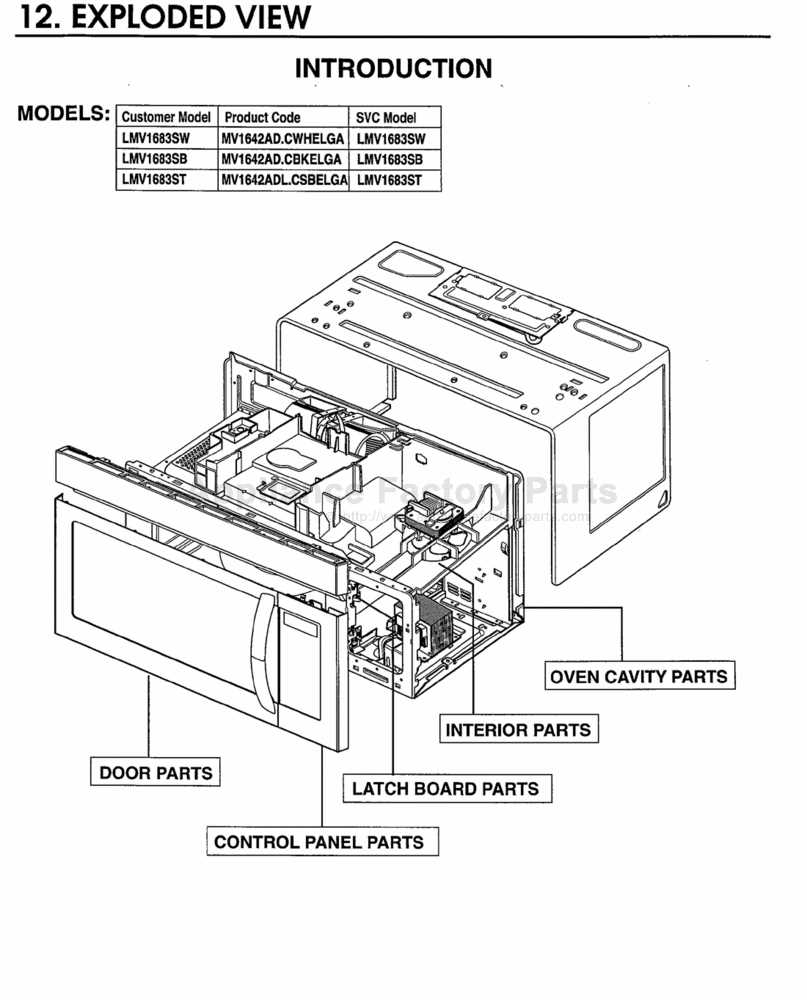
Modern kitchen appliances are complex systems made up of various elements that work together to ensure optimal performance. A clear understanding of how these components interact is essential for anyone looking to troubleshoot or maintain their device effectively.
By learning the function and placement of each element, users can avoid common issues and extend the appliance’s lifespan. Knowing the critical components not only helps with repairs but also ensures safe and efficient usage.
In this section, we will break down the key components of these devices and how each plays a vital role in making the appliance work smoothly. Whether you are looking to perform maintenance or simply understand how your device operates, this guide provides a valuable overview of the internal structure.
Key Components of a Microwave
Every modern kitchen appliance is made up of several essential elements that collaborate to achieve its intended function. These internal components are designed to support the overall operation, ensuring that the appliance performs efficiently and safely.
Among the most critical elements are the power source, which provides the energy needed for operation, and the control board, which directs the device’s functions. Additionally, a fan plays a crucial role in regulating temperature and distributing heat evenly.
The cooking chamber serves as the main area where the food is heated, and the door switch ensures the appliance only operates when securely closed. Each of these pieces must work in harmony to provide a smooth and effective cooking experience.
How Microwave Parts Work Together

The functionality of a kitchen appliance relies on the seamless interaction of its internal components. Each element has a specific role, but they are all interconnected, working in unison to ensure that the device functions as expected. Understanding how these elements collaborate is key to troubleshooting and maintaining the appliance effectively.
Energy Flow and Distribution

The process begins with the power supply, which generates the energy required to operate the device. This energy is then directed to the magnetron, where it is converted into electromagnetic waves. These waves are crucial for heating the food, as they penetrate and vibrate water molecules, generating heat.
Heat Regulation and Safety
The fan helps regulate the temperature by circulating air within the cooking chamber, preventing overheating and ensuring even heat distribution. Simultaneously, the control board monitors and adjusts the various functions, making sure the system operates within safe parameters. Additionally, the door switch ensures that the appliance doesn’t operate if the door is open, preventing accidents.
Identifying Common Microwave Issues
Like any appliance, issues can arise over time due to wear and tear or improper use. Recognizing these problems early is essential for ensuring safe operation and preventing more significant damage. Some issues can be simple to fix, while others may require professional assistance.
Power Failures
One of the most common issues is a complete loss of power. This could be caused by a blown fuse or an issue with the electrical connection. If the appliance does not turn on at all, checking the power source and internal wiring can help pinpoint the issue.
Uneven Heating

If food is not heating evenly, the cause may lie with the fan or the magnetron, which could be malfunctioning. When these components are not working correctly, heat distribution becomes uneven, leading to cold spots in the food. Regular cleaning and maintenance can often resolve this issue.